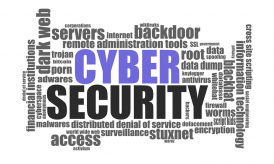A remote desktop service is a system whereby a person is able to connect to and use a specific computer from a remote location as if they were sitting in front of it at the time. The most common example is that of accessing your office computer from the PC or laptop at home, enabling you to manage files, use available resources and generally do everything you’d be able to do if you were actually at the computer in question.

Thousands of businesses the world over use and rely on RDS as a core part of their IT framework. From multinational corporations to educational institutes offering long-distance-learning and so many more besides, there are so many uses to RDS in innumerable industry sectors.
As with so many IT systems and initiatives however, RDS comes with both its inherent advantages and disadvantages. As such, it’s a case of weighing up the good and the bad in order to work out whether or not RDS is the right step forward for you and your business.
Remote Desktop Service Advantages
- Security – As all of your important data including files and documents will be held in the most secure data centres in the world, there’s practically zero chance of theft or loss. Connection to the remote desktop are protected by state-of-the-art encryption technology, which eliminates the risk of hacking and other data-loss cases common with standard computing and networking.
- Flexibility – The core purpose of RDS is to allow workers to perform their duties from literally anywhere at any time. The only thing needed is a computer and a secure internet connection, which adds up to the kind of freedom and flexibility that would be otherwise entirely impossible.
- Lower Costs – Often when using a remote desktop system, it isn’t necessary to invest in multiple copies of the same business software packages as they can be used via a single machine. In addition, the computers used to access the host computer do not necessarily have to be high-performance machines with equally high prices.
Remote Desktop Service Disadvantages
- Downtime – If the service provider is anything other than flawless in its consistency and performance, there’s a strong risk of downtime. And when it comes to downtime in the world of RDS, it can leave the entire network/system inaccessible until the necessary repairs have been made.
- Network Dependency – A little like the above, the system will work fine just as long as all third-party computers have strong and reliable internet connections available to them. If not, the system is completely out of reach.
- Bottlenecks – Depending on the power of the host system and how many are trying to access it at the same time, it’s possible that bottlenecks can be caused and reduce performance.
- Knowledge – The administrator of the RDS must have solid knowledge of the subject and be readily contactable if and when any problems should occur during normal working hours. Without the necessary help on standby to turn to in the event of a system outage, the results could be dire.
















Remote desktop is a rapidly growing technology today as it helps businesses to reduce costs, provide faster resolution to technical problems, convenience of providing support from anywhere etc. There are various remote support tools to select from such as R-HUB, Logmein, GoSupportNow, GoToMyPC, Bomgar, etc. in order to remotely access computers.